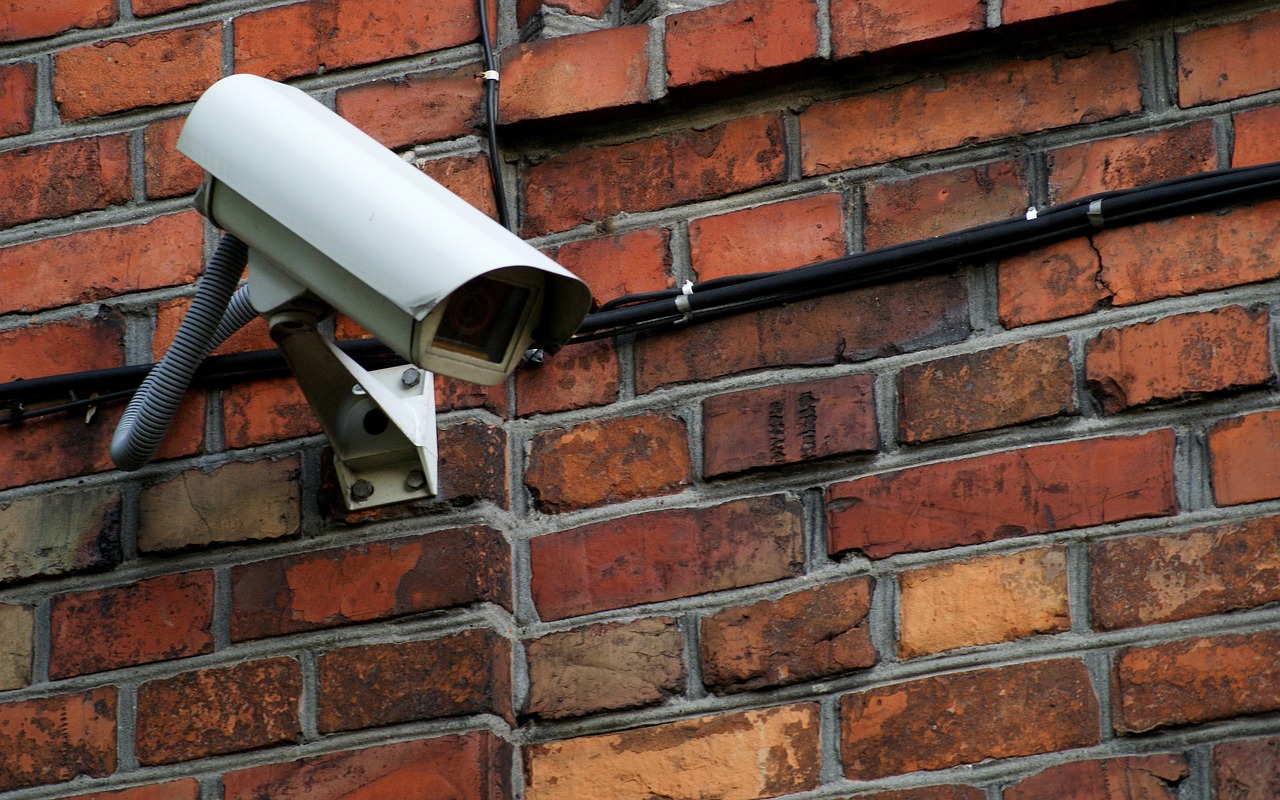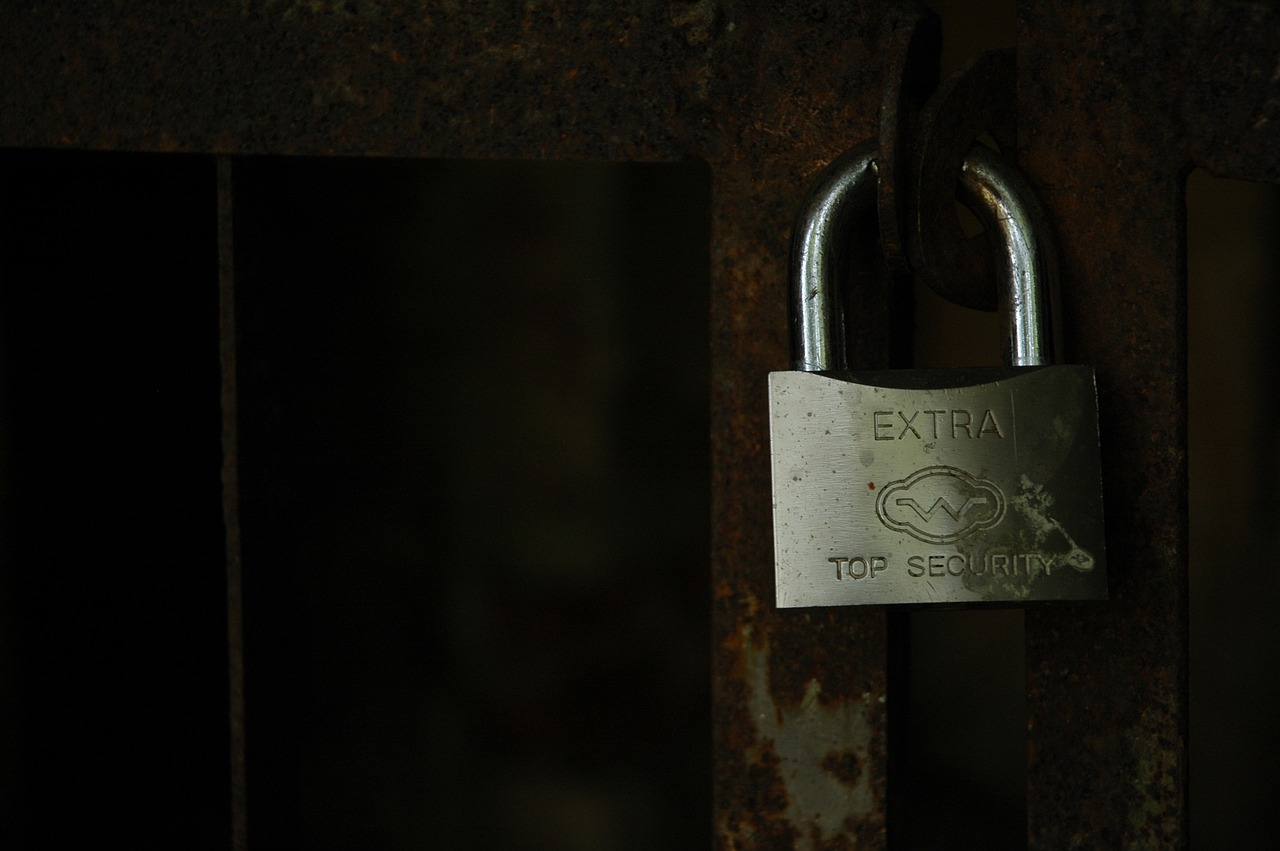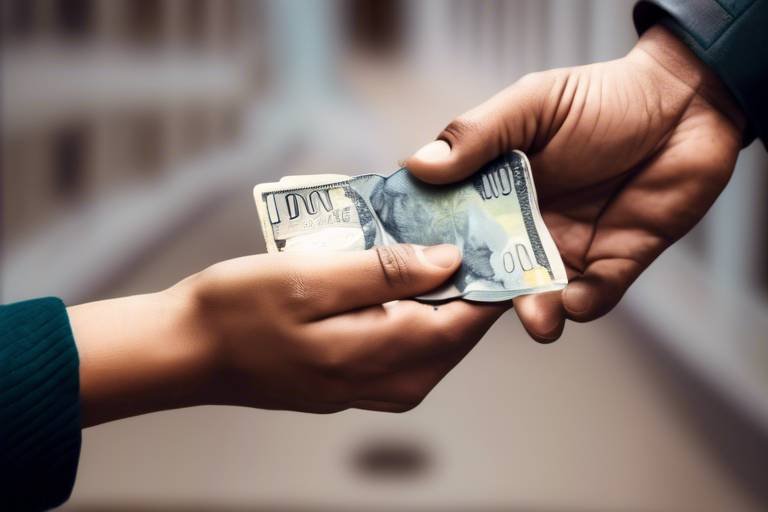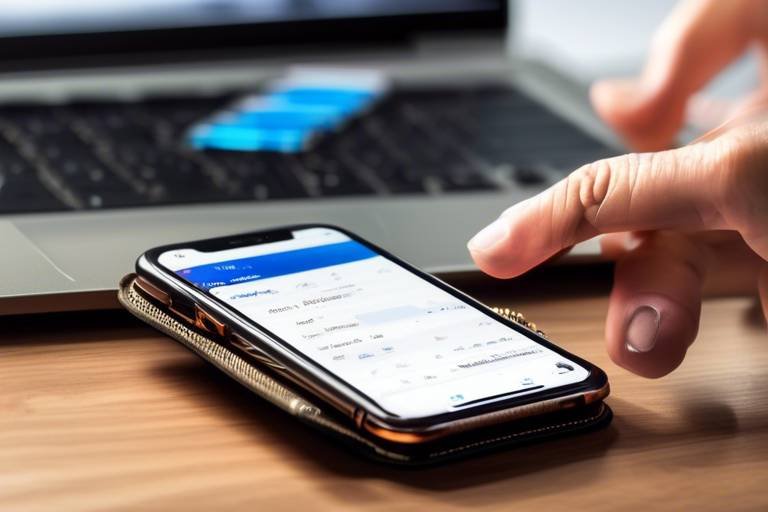Understanding the Importance of Wallet Updates and Maintenance
In today's digital age, where financial transactions happen at the click of a button, the importance of maintaining and updating your digital wallet cannot be overstated. Think of your digital wallet as a treasure chest; if you don’t keep it locked and updated, you’re inviting thieves to take what’s rightfully yours. Regular updates ensure that your wallet is equipped with the latest security features, protecting your hard-earned money from potential threats. But why is it so crucial to stay on top of these updates? Let’s dive deeper into the world of digital wallets and explore the myriad of benefits that come with regular maintenance.
Regular updates are not just a technical formality; they are essential for maintaining the security and efficiency of your digital wallet. Imagine driving a car without ever checking the oil or getting it serviced. Over time, performance degrades, and the risk of breakdown increases. Similarly, digital wallets require updates to protect against vulnerabilities and enhance the overall user experience. Software developers continuously work to identify and fix security flaws, and by regularly updating your wallet, you’re essentially ensuring that you’re driving a well-maintained vehicle through the bustling streets of the internet.
Neglecting wallet maintenance can lead to severe consequences, which may include the potential loss of funds. It’s like leaving your front door unlocked in a neighborhood known for burglaries; it’s only a matter of time before something goes missing. Outdated wallets are often a goldmine for cybercriminals, who actively seek out vulnerabilities to exploit. By failing to update your wallet, you’re putting your financial assets at risk. The importance of proactive management cannot be stressed enough, as it can save you from the heartache of losing your hard-earned money.
Outdated wallets often harbor security flaws that can be exploited by hackers. Some of the common vulnerabilities include:
- Weak encryption protocols
- Unpatched software bugs
- Compatibility issues with newer security measures
These vulnerabilities are like open windows in your house; they provide easy access for intruders. By ensuring timely updates, you can effectively mitigate these risks and keep your financial information secure.
Security breaches can have devastating effects on users, leading to financial loss and identity theft. Just imagine waking up one morning to find that your entire savings have vanished because your wallet was compromised. The repercussions of breaches caused by outdated wallet software can be catastrophic, not only affecting your finances but also your peace of mind. Victims of identity theft often face long and arduous processes to reclaim their identity, which can take years to resolve.
Updates are not solely about security; they also enhance functionality and user experience. Think of it as upgrading from an old, clunky flip phone to the latest smartphone. New features, improved interfaces, and better performance can make managing your finances a breeze. By keeping your wallet updated, you can enjoy a smoother experience, allowing you to focus on what truly matters—your financial goals.
Implementing best practices for wallet maintenance can significantly reduce risks. Here are some essential steps users should take to keep their wallets secure and up-to-date:
- Regularly check for software updates and install them promptly.
- Enable two-factor authentication for an extra layer of security.
- Back up your wallet data to prevent loss in case of device failure.
By following these best practices, you can ensure that your digital wallet remains a safe and reliable tool for managing your finances.
Selecting the appropriate wallet is fundamental for security and usability. With so many options available, it can be overwhelming to choose the right one. Factors to consider include the type of assets you plan to store, your level of technical expertise, and the specific features that meet your needs. It’s essential to do thorough research and select a wallet that aligns with your financial goals.
Understanding the different types of digital wallets can help users make informed choices. Here’s a brief overview of various wallet types:
- Hot Wallets: These are connected to the internet and are convenient for frequent transactions.
- Cold Wallets: These are offline wallets that provide enhanced security for long-term storage.
- Hardware Wallets: Physical devices that store your assets securely.
Each type has its unique features and benefits, so it's essential to choose one that fits your lifestyle and security needs.
Not all wallets offer the same level of security. When evaluating digital wallets, look for key security features such as:
- End-to-end encryption
- Multi-signature support
- Regular security audits
These features act as a fortress around your assets, ensuring that they remain safe from potential threats.
Q: How often should I update my digital wallet?
A: It's recommended to check for updates at least once a month or whenever a new version is released by the wallet provider.
Q: What should I do if I suspect my wallet has been compromised?
A: Immediately change your passwords, enable two-factor authentication, and contact your wallet provider for further assistance.
Q: Are cold wallets really safer than hot wallets?
A: Yes, cold wallets are generally considered safer because they are not connected to the internet, making them less vulnerable to hacking.

The Necessity of Regular Updates
In the ever-evolving landscape of digital finance, regular updates for your digital wallet are not just a good idea—they're essential. Imagine your wallet as a car; if you neglect to change the oil or update the brakes, you risk a breakdown, right? Similarly, outdated software can lead to vulnerabilities that hackers are all too eager to exploit. Regular updates serve as a protective shield, fortifying your wallet against potential threats.
But what exactly do these updates entail? They often include security patches that address known vulnerabilities, enhancements that improve performance, and new features that can make your experience smoother. For instance, a recent update might introduce two-factor authentication, adding an extra layer of security that wasn’t there before. This is crucial because, in the digital world, every extra step you take towards securing your assets can mean the difference between safety and a significant financial loss.
Moreover, updates can significantly enhance your user experience. They often come with improved interfaces, making it easier to navigate your wallet. Think about it: when was the last time you used an app that hadn’t been updated in a while? Chances are, it was slow, clunky, and frustrating. Regular updates ensure that your wallet remains user-friendly and efficient, allowing you to manage your finances without unnecessary hassle.
To illustrate the importance of regular updates, consider the following table that outlines the benefits of staying updated versus the risks of neglecting updates:
| Staying Updated | Neglecting Updates |
|---|---|
| Enhanced Security | Increased Vulnerability |
| Improved User Experience | Frustrating Interface |
| Access to New Features | Limited Functionality |
| Better Performance | Slow Response Times |
In conclusion, regular updates are not just a checkbox on your to-do list—they're a crucial part of maintaining the integrity and performance of your digital wallet. By keeping your wallet updated, you're not only protecting your financial assets but also ensuring a seamless and enjoyable user experience. So, the next time you receive a notification about an update, don’t ignore it! Embrace it as a step towards safeguarding your digital finances.

Risks of Neglecting Wallet Maintenance
Neglecting wallet maintenance can be like leaving your front door wide open in a neighborhood known for petty crime. It may seem harmless at first, but the risks are very real and can lead to severe consequences, including potential loss of funds. Imagine waking up one day to find that your entire digital wallet has been emptied, and the only thing left is the sinking feeling in your stomach. This is not just a hypothetical scenario; it happens more often than you might think.
One of the most significant risks associated with outdated wallets is the vulnerability to hacking. When wallet software is not regularly updated, it can become a treasure trove of security flaws, waiting to be exploited by cybercriminals. Hackers thrive on outdated systems, as they often contain known vulnerabilities that can be easily targeted. In fact, studies show that over 60% of successful cyberattacks are aimed at outdated software. This statistic alone should send shivers down your spine!
Furthermore, neglecting wallet maintenance can lead to compatibility issues. As technology evolves, so do the standards and protocols that govern digital transactions. If your wallet is not kept up-to-date, you may find yourself unable to access new features, or worse, unable to transact with certain services. This can be incredibly frustrating, especially when you want to make an important purchase or transfer funds quickly.
In addition to these technical risks, there are also psychological impacts to consider. When users know their wallets are outdated, it can lead to anxiety and second-guessing every transaction. This anxiety can result in poor decision-making, such as hesitating to invest in new opportunities or spending too much time worrying about security rather than enjoying the benefits of their digital assets.
To illustrate the potential consequences of neglecting wallet maintenance, consider the following table:
| Risk | Potential Consequence |
|---|---|
| Vulnerability to Hacking | Loss of funds and personal information |
| Compatibility Issues | Inability to use essential services |
| Increased Anxiety | Poor decision-making and missed opportunities |
In summary, the risks of neglecting wallet maintenance are multifaceted and can lead to dire consequences. By staying proactive and keeping your digital wallet updated, you not only protect your financial assets but also enhance your overall user experience. Remember, a little maintenance goes a long way in safeguarding your digital life!
- How often should I update my digital wallet? It's recommended to check for updates at least once a month or whenever a new version is released.
- What are the signs that my wallet needs maintenance? Look for slow performance, inability to access new features, or notifications about security updates.
- Can I lose my funds if I don't maintain my wallet? Yes, outdated wallets are more susceptible to hacking, which can lead to loss of funds.

Common Vulnerabilities in Outdated Wallets
When it comes to digital wallets, think of them as your virtual bank vault. Just like any physical vault, if the locks and mechanisms aren’t updated, they can become vulnerable to theft and unauthorized access. Outdated wallets often harbor a variety of security flaws that can be exploited by hackers, putting your precious financial assets at risk. It's crucial to understand these vulnerabilities to appreciate the importance of regular updates.
One of the most significant vulnerabilities in outdated wallets is the presence of unpatched security flaws. Software developers continuously work to identify and fix these vulnerabilities, but if you’re not regularly updating your wallet, you’re essentially leaving your door wide open for cybercriminals. These flaws can allow hackers to gain unauthorized access to your wallet, leading to potential financial loss.
Another common issue is the lack of advanced security features that newer versions of wallet software may offer. For instance, many updated wallets include enhanced encryption methods, two-factor authentication, and biometric security options. Without these features, your wallet becomes an easy target. Imagine trying to protect your home with an old lock that can be picked in seconds; that’s what using an outdated wallet is like.
Moreover, outdated wallets may not be compatible with the latest protocols or technologies in the cryptocurrency space. This incompatibility can lead to transaction failures or loss of access to your funds. For example, if a new blockchain upgrade is released and your wallet hasn’t been updated, you might find yourself unable to send or receive transactions, which can be incredibly frustrating and potentially costly.
In addition to these technical vulnerabilities, outdated wallets can also suffer from poor user experience. Older versions may have clunky interfaces, making it difficult for users to navigate or perform transactions efficiently. This not only hampers your ability to manage your funds but can also lead to mistakes that could cost you money. Think of it as trying to drive a car with outdated navigation software; you might end up lost or taking unnecessary detours.
To summarize, here are some of the common vulnerabilities associated with outdated wallets:
- Unpatched security flaws that can be exploited by hackers.
- Lack of advanced security features such as encryption and two-factor authentication.
- Incompatibility with new blockchain protocols, leading to transaction issues.
- Poor user experience due to outdated interfaces.
In conclusion, keeping your digital wallet updated is not just about having the latest features; it's about safeguarding your financial future. The risks associated with outdated wallets can have devastating effects, including financial loss and identity theft. By ensuring that your wallet is always up to date, you can enjoy peace of mind knowing that your assets are secure from potential threats.

Impact of Security Breaches
Imagine waking up one morning to find that your hard-earned money has vanished without a trace. This nightmare scenario is all too real for many users who have fallen victim to security breaches in their digital wallets. When outdated wallet software is left unchecked, it becomes a prime target for hackers looking to exploit vulnerabilities. The repercussions of such breaches can be devastating, not just financially but also emotionally.
Security breaches can lead to a myriad of consequences, including:
- Financial Loss: The most immediate impact is the potential loss of funds. Once hackers gain access, they can transfer or withdraw money without your consent.
- Identity Theft: A breach can also expose personal information, leading to identity theft, which can take years to resolve.
- Loss of Trust: Users may lose faith in digital wallets altogether, leading to a reluctance to use online financial services.
- Legal Repercussions: In some cases, users may face legal issues if their financial data is misused.
Furthermore, the psychological toll of a security breach can be profound. Victims often experience anxiety, stress, and a sense of vulnerability, knowing that their financial security has been compromised. It's a harsh reminder that in the digital age, keeping your wallet updated is not just a matter of convenience but a necessity.
To illustrate the potential impact, consider the following table that outlines recent statistics on security breaches related to digital wallets:
| Year | Number of Breaches | Average Loss per Breach |
|---|---|---|
| 2021 | 150 | $4,000 |
| 2022 | 200 | $5,500 |
| 2023 | 250 | $6,000 |
As the data shows, the number of breaches is on the rise, and so is the average loss per incident. This underscores the urgency of keeping your wallet software up-to-date. By regularly updating your digital wallet, you not only safeguard your funds but also protect your peace of mind.
In conclusion, the impact of security breaches is far-reaching and can affect various aspects of a user's life. From financial losses to emotional distress, the consequences are significant. Therefore, staying proactive with wallet maintenance is not just a recommendation; it's a crucial step in ensuring your financial safety.
- What should I do if I suspect a security breach? If you suspect a breach, immediately change your passwords, enable two-factor authentication, and contact your wallet provider for assistance.
- How often should I update my digital wallet? It's best to update your wallet software as soon as updates are available, ideally checking for updates at least once a month.
- Are hardware wallets safer than software wallets? Generally, hardware wallets are considered more secure because they store your private keys offline, reducing the risk of online attacks.

Updating to Enhance User Experience
When it comes to digital wallets, updates are not just about security; they play a pivotal role in enhancing the overall user experience. Imagine using an app that hasn’t been updated in years—clunky interface, slow response times, and missing out on the latest features. Sounds frustrating, right? That's why keeping your wallet updated is essential.
Updates often introduce a range of new functionalities that make transactions smoother and more intuitive. For example, many wallets now offer features like instant notifications for transactions, which keep you informed in real-time. This not only enhances your awareness of your financial activities but also helps in detecting any unauthorized transactions quickly.
Moreover, developers frequently optimize their applications based on user feedback. This means that with each update, you're likely to see improvements that cater specifically to what users want. Whether it's a more streamlined interface, faster loading times, or additional payment options, these enhancements can significantly improve your interaction with the wallet.
In addition to new features, updates often address bugs and glitches that can hinder performance. Think of it like getting a tune-up for your car; without regular maintenance, you might experience breakdowns or inefficiencies. Similarly, failing to update your wallet can lead to frustrating experiences, such as failed transactions or slow processing times.
Furthermore, many updates include improvements to the user interface (UI). A well-designed UI can make a world of difference in how easy and enjoyable it is to use your digital wallet. For instance, a recent update might reorganize the layout to make it more user-friendly, allowing you to find features quickly and efficiently.
To wrap it up, updating your digital wallet is not just about security; it’s about enriching your overall experience. By embracing updates, you’re not only securing your assets but also ensuring that you have access to the latest features and improvements that make managing your finances a breeze. So, next time you see that update notification, don't ignore it—embrace it!
- Why should I update my digital wallet? Regular updates enhance security, fix bugs, and introduce new features that improve user experience.
- What happens if I don't update my wallet? Neglecting updates can lead to security vulnerabilities and a poor user experience.
- How often should I check for updates? It's advisable to check for updates at least once a month or enable automatic updates if possible.
- Can updates change the way my wallet works? Yes, updates can introduce new features or alter existing functionalities, so it's good to stay informed about what's new.

Best Practices for Wallet Maintenance
Maintaining your digital wallet is not just about keeping it up-to-date; it's about ensuring that your financial assets are secure and easily accessible. Think of your wallet as a digital safe. Just as you wouldn't leave your safe unlocked, you shouldn't neglect the maintenance of your wallet. Here are some best practices to keep in mind:
First and foremost, regularly update your wallet software. Developers frequently release updates to patch security vulnerabilities and improve functionality. Ignoring these updates is like leaving the front door of your house wide open. Make it a habit to check for updates weekly or enable automatic updates if available.
Secondly, use strong and unique passwords. Your wallet is only as secure as the password protecting it. Avoid using easily guessable passwords and consider using a password manager to generate and store complex passwords. Additionally, enable two-factor authentication (2FA) wherever possible. This adds an extra layer of security, making it significantly harder for unauthorized users to access your wallet.
Next, consider backing up your wallet regularly. Just like you'd keep a backup of important documents, your wallet's data should also be backed up. This ensures that in the event of a device failure, theft, or loss, you can recover your assets. Store your backup in a secure location, separate from your main device, to minimize risks.
Another critical practice is to monitor your wallet activity. Regularly check your transaction history for any unauthorized transactions. If something seems off, report it immediately. This proactive approach can help you catch potential fraud early, rather than waiting for a significant loss to occur.
Lastly, educate yourself about phishing attacks. Cybercriminals often use deceptive tactics to trick users into revealing their wallet credentials. Be wary of unsolicited emails or messages that ask for personal information. Always verify the source before clicking on any links or providing sensitive information. It’s like being asked for your house key by a stranger—trust your instincts!
In summary, maintaining your digital wallet involves a combination of regular updates, strong passwords, backups, monitoring, and education. By following these best practices, you can significantly reduce the risks associated with wallet neglect and ensure that your financial assets remain secure and accessible.
Q: How often should I update my digital wallet?
A: It's best to check for updates at least once a week, or enable automatic updates if your wallet supports it.
Q: What should I do if I suspect unauthorized access to my wallet?
A: Immediately change your password, enable two-factor authentication, and report the suspicious activity to your wallet provider.
Q: Is it safe to store my wallet backup in the cloud?
A: While cloud storage can be convenient, it’s important to ensure that the service you use is secure. Consider using encrypted storage solutions or physical backups instead.
Q: How can I recognize phishing attempts?
A: Be cautious of unsolicited emails or messages that ask for personal information, especially if they contain links. Always verify the source before clicking.

Choosing the Right Wallet
When it comes to managing your digital assets, choosing the right wallet is like picking the perfect home for your valuables. You wouldn't just throw your prized possessions into any old box, right? Similarly, your digital funds deserve a secure and user-friendly environment. But with so many options available, how do you decide which wallet is best for you? Let's break it down!
First and foremost, consider your specific needs. Are you a casual user who occasionally makes transactions, or are you a serious trader who needs robust features? Understanding your usage patterns can significantly influence your choice. For instance, if you're someone who frequently trades cryptocurrencies, a wallet that offers advanced trading features might be essential. On the other hand, if you simply want to store your funds securely, a more straightforward wallet could suffice.
Next, think about the security features of the wallet. Just like you wouldn't want to live in a neighborhood with high crime rates, you shouldn't trust your money to a wallet that lacks strong security measures. Look for wallets that offer features such as:
- Two-Factor Authentication (2FA): This adds an extra layer of security by requiring a second form of identification.
- Multi-Signature Support: This feature requires multiple keys to authorize a transaction, making it harder for unauthorized users to access your funds.
- Backup Options: A good wallet should allow you to back up your data easily, ensuring you don’t lose access to your funds.
Another critical factor to consider is the type of wallet. Digital wallets can be broadly classified into three categories: hot wallets, cold wallets, and hardware wallets. Each type has its pros and cons:
| Type of Wallet | Description | Pros | Cons |
|---|---|---|---|
| Hot Wallets | Online wallets that are always connected to the internet. | Easy to use and convenient for daily transactions. | More vulnerable to hacking. |
| Cold Wallets | Offline wallets that store your assets without internet access. | Highly secure against online threats. | Less convenient for frequent transactions. |
| Hardware Wallets | Physical devices that securely store your private keys. | Combines the benefits of hot and cold wallets. | Can be expensive and requires physical safekeeping. |
Ultimately, the right wallet for you will depend on your individual preferences and needs. Do thorough research, read reviews, and consider testing a few wallets to find the one that feels right. Remember, your digital wallet is more than just a tool; it's a safeguard for your financial future!
Q: What is the safest type of digital wallet?
A: Cold wallets, particularly hardware wallets, are considered the safest options as they store your assets offline and are less susceptible to hacking.
Q: Can I use multiple wallets?
A: Absolutely! Many users opt for multiple wallets to diversify their storage and manage different types of assets effectively.
Q: How often should I update my wallet software?
A: It's best to update your wallet software as soon as updates are available to ensure you benefit from the latest security features and improvements.

Types of Digital Wallets
In the ever-evolving world of finance, digital wallets have become a staple for managing money efficiently and securely. But did you know that not all digital wallets are created equal? Just like choosing the right tool for a job, selecting the right type of digital wallet can make a world of difference in your financial experience. Let's dive into the various types of digital wallets available today, so you can make an informed decision that suits your needs.
First up, we have hot wallets. These are wallets that are connected to the internet, making them incredibly convenient for daily transactions. Hot wallets are perfect for users who frequently buy and sell cryptocurrencies or make regular online purchases. However, with convenience comes a trade-off in security. Because they are online, hot wallets can be more vulnerable to hacking attempts. Think of them as a busy café where you can grab a coffee quickly, but you might leave your bag unattended on the table.
On the other hand, we have cold wallets. These are offline storage options that provide a higher level of security. Cold wallets come in the form of hardware devices or even paper wallets. They are ideal for long-term storage of assets, much like a safety deposit box in a bank. You wouldn't want to keep your most valuable items in a place where they can easily be taken, right? Cold wallets ensure that your digital assets are kept away from prying eyes and potential threats.
Next, we have mobile wallets. These are applications installed on smartphones, making it easy to carry your wallet wherever you go. Mobile wallets often integrate with payment systems, allowing you to make purchases with just a tap of your phone. They're like having a mini bank in your pocket! However, keep in mind that mobile wallets can be susceptible to malware, so it’s essential to keep your phone secure and updated.
Then there's the web wallets, which are hosted by third-party services and accessible through web browsers. While they offer the convenience of being accessible from anywhere, they also come with the risk of security breaches. When using a web wallet, you’re essentially trusting a third party with your funds, similar to leaving your valuables with a friend. Always ensure that the service you choose has a solid reputation and robust security measures in place.
Lastly, we have desktop wallets. These are software applications that you download and install on your computer. Desktop wallets offer a good balance between security and convenience. They are less vulnerable to online threats compared to hot wallets, but they can still be compromised if your computer is infected with malware. It’s like having a home safe; it’s secure, but you need to make sure your home is safe from intruders.
In summary, understanding the different types of digital wallets is crucial for anyone looking to manage their financial assets effectively. Whether you prioritize convenience, security, or a balance of both, there's a wallet type that fits your lifestyle. Remember, the right choice can enhance your user experience and provide peace of mind. So, which wallet will you choose for your digital journey?
- What is the safest type of digital wallet? Cold wallets are considered the safest due to their offline nature.
- Can I use multiple wallets? Yes, many users opt for a combination of wallet types for different purposes.
- Are mobile wallets secure? They can be secure if you take proper precautions, such as keeping your device updated and using strong passwords.
- What should I look for in a digital wallet? Look for security features, ease of use, and compatibility with the cryptocurrencies you wish to store.

Evaluating Wallet Security Features
When it comes to digital wallets, ensuring the security of your financial assets is paramount. But how do you know if a wallet is secure enough for your needs? It’s not just about having a flashy interface or a long list of features; you need to dig deeper and evaluate the security features that a wallet offers. Think of it like choosing a safe for your valuables—would you pick one without checking if it has a sturdy lock or an alarm system? The same principle applies here.
First and foremost, consider the encryption protocols that the wallet employs. Strong encryption is akin to having a high-tech security system that keeps intruders at bay. Look for wallets that utilize advanced encryption standards such as AES-256, which is widely regarded as one of the most secure forms of data encryption available. This ensures that even if someone were to intercept your data, they would find it nearly impossible to decipher.
Another crucial aspect to evaluate is the two-factor authentication (2FA) feature. This adds an extra layer of security by requiring not just your password, but also a second form of verification, such as a text message or an authentication app. It’s like needing both a key and a fingerprint to unlock a safe—this greatly reduces the risk of unauthorized access. Wallets that support 2FA are generally considered much safer than those that do not.
Next, examine the wallet's backup and recovery options. In the unfortunate event that you lose access to your wallet, having a reliable backup can mean the difference between losing everything and recovering your assets. Look for wallets that allow you to create secure backups and provide recovery phrases that are easy to store yet difficult for others to access. This is akin to keeping a spare key hidden in a safe place rather than just tossing it under the welcome mat.
It's also important to assess the wallet's transaction history and monitoring features. A good wallet should provide you with detailed logs of your transactions. This not only helps you keep track of your spending but also allows you to quickly identify any suspicious activity. Imagine having a security camera installed in your home; it gives you peace of mind knowing you can review footage if something seems off.
Finally, don't overlook the community and developer support. A wallet backed by a strong community and active developers is generally more reliable. Look for wallets that have established a good reputation and have been around for a while. Check online forums and reviews to gauge user experiences. If a wallet has a history of addressing security vulnerabilities promptly, it’s a good sign that they take user safety seriously.
In summary, evaluating wallet security features involves looking for robust encryption, two-factor authentication, reliable backup options, comprehensive transaction monitoring, and community support. By focusing on these aspects, you can choose a digital wallet that not only meets your needs but also keeps your assets safe and secure. Remember, in the world of digital finance, it’s better to be safe than sorry!
- What is two-factor authentication? Two-factor authentication (2FA) is a security process that requires two different forms of identification to access your digital wallet, adding an extra layer of protection.
- How can I back up my digital wallet? Most digital wallets provide an option to create a backup. Make sure to follow the wallet's instructions carefully, and store your backup phrase in a secure location.
- What should I do if I suspect my wallet has been compromised? Immediately change your password, enable two-factor authentication if you haven’t already, and contact the wallet's support team for further assistance.
- Are all digital wallets equally secure? No, not all wallets offer the same level of security. It’s crucial to evaluate the security features of each wallet before choosing one.
Frequently Asked Questions
- Why are regular updates important for my digital wallet?
Regular updates are essential because they patch security vulnerabilities and improve overall functionality. Just like updating your phone or computer, wallet updates ensure you have the latest protections against hackers and other threats. Keeping your wallet up-to-date is like locking your doors at night; it adds an extra layer of security.
- What risks do I face if I neglect wallet maintenance?
Neglecting wallet maintenance can expose you to various risks, including potential loss of funds and identity theft. An outdated wallet may contain security flaws that hackers can exploit. Think of it as driving a car without regular maintenance; eventually, something will go wrong, and the consequences could be dire.
- What are common vulnerabilities in outdated wallets?
Outdated wallets often have known vulnerabilities that hackers can take advantage of. These may include weak encryption methods, unpatched software bugs, or outdated security protocols. By not updating, you're essentially leaving a backdoor open for cybercriminals to waltz in and take what’s yours.
- How can security breaches impact me?
Security breaches can lead to significant financial loss, identity theft, and a long, arduous process of recovery. If your wallet is compromised, you might find yourself dealing with unauthorized transactions, which can take time and effort to resolve. It's like losing your wallet in a crowded area; the longer you wait to find it, the more likely someone else will take advantage of it.
- How do updates enhance my user experience?
Updates often come with new features, improved interfaces, and better overall performance. This means that not only are you getting enhanced security, but you're also enjoying a smoother and more intuitive experience. Imagine getting a software upgrade that makes your favorite app run faster and look better; that’s what wallet updates do for you!
- What best practices should I follow for wallet maintenance?
To maintain your wallet effectively, consider the following best practices: regularly check for updates, use strong passwords, enable two-factor authentication, and back up your wallet data. Think of these practices as your wallet’s personal gym routine; the more you invest in its health, the better it performs.
- What factors should I consider when choosing a digital wallet?
When selecting a digital wallet, consider factors such as security features, ease of use, compatibility with different currencies, and customer support. It's like choosing a bank; you want one that offers you the best services and keeps your money safe.
- What types of digital wallets are available?
There are several types of digital wallets, including hot wallets (connected to the internet) and cold wallets (offline storage). Each type has its pros and cons, so understanding their unique features will help you make an informed decision. Think of it as choosing between a checking account and a savings account; each serves a different purpose.
- How can I evaluate the security features of a digital wallet?
To evaluate a wallet's security features, look for strong encryption, two-factor authentication, multi-signature options, and a good reputation in the community. These elements are like the security systems in a bank; the more robust they are, the safer your assets will be.



















